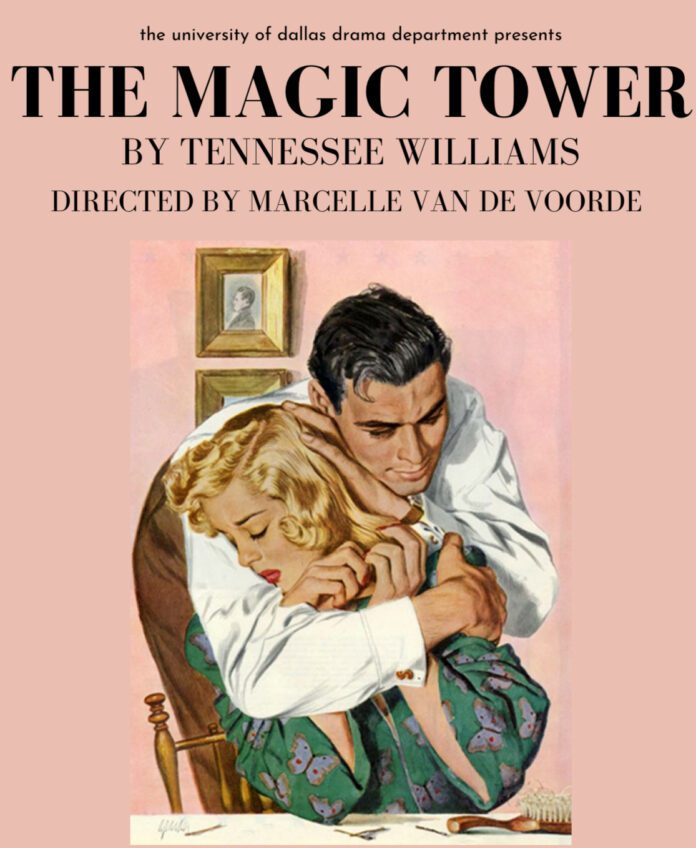
In Tennessee Williams’ “The Magic Tower,” it says, “That’s the marvelous thing about living in a magic tower, Jim. There’s only two people.”
Newlyweds Jim and Linda live together in a ramshackle attic studio in New York City, struggling to make a living off Jim’s measly salary as a young artist. In an attempt to escape the harsh reality of their situation, the couple imagines a “Magic Tower,” fortified only by their love for each other.
When Jim leaves to court a self-deemed “Christopher Columbus of modern art” at the Waldorf Hotel, Linda is left alone to experience the harsh reality of their situation.
Linda’s belief that she has never been happier than when she is in the “tower” with Jim slowly dissolves – along with their marriage – when the landlady and two ex-colleagues come to call, and the reality of their poverty breaks through the thin veil of her delusion and sends her crashing back to earth.
“The Magic Tower” took to the UD stage this past week, startling audiences with a melodramatic portrayal of the psychology of denial. This one-act performance by Tennessee Williams (1911-1983) is only one of a collection of short stories entitled “The Magic Tower and Other One-Act Plays.”
In each short story he wrote, Williams investigates the raw psychological insight which shattered theatrical norm at the time and transformed the American stage.
Faith Berry plays a compelling Linda in an all-around-1950s nightgown and robe, and felt simultaneously joyous and sad in her presentation of the ex-actress haunted by her past. The cloying desperation to deny reality which drives the storyline is encapsulated in Berry’s character, to the point where the audience wants to scream to her to wake up and touch some grass.
Jim is portrayed by Henry Gramling, as endearing as he is naive, and his youthful “happy-go-lucky attitude” at the start of the play strongly juxtaposes the gloom into which he descends after Jim fails to sell his art.
The play has only one setting, the rundown apartment, which focuses on the dreariness of their situation through shabby furniture and a polyethylene blind hanging limply from the window.
Linda and Jim’s enthusiasm about their fantasy tower at first blush is warmly appealing to the audience: Berry and Gramling are sweet and endearing, and their sweet words allow the audience to hope for the characters’ success.
This hope turns sour with the visits of their Irish landlady (played by Grace Finan, whose Irish accent effectively combined with her Irish grudge against Linda), and Linda’s old coworkers Babe and Mitch (Beatrice Ellison with the Brooklyn accent and Andrew Sanders).
The characters visit Linda (notably in the absence of her dear Jim), revealing to the audience that Linda has more misguided self-preservation stored up in her magic tower than she has loving care for Jim.
The play may be viewed as a danger of overactive imagination.
It’s possible that the takeaway that would most benefit UD students is the 20th century disease of escapism which infects the American culture.
While I am not saying that UD students are particularly privy to this issue, especially in contrast with other universities, it is helpful to gauge an awareness of the way in which escapism has caused much of the confusion in our culture about the role of suffering and pleasure in our lives.
Jim and Linda could have rallied their efforts and preserved their marriage by maintaining a sustainable wage; however, the reality of their dissolved marriage is an example of the prevailing trend in our culture to give up when the illusion is shattered.